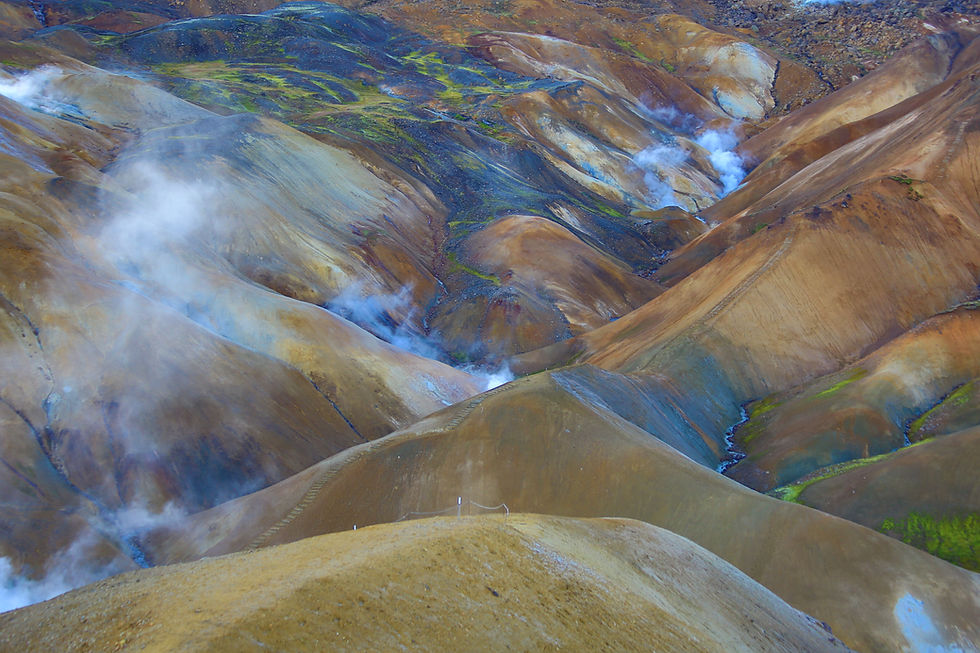A Hike Above Ohikilolo Valley, Oahu
- Mar 30, 2020
- 3 min read
Updated: Jun 9, 2025
Ohikilolo (Crazy Crabs in Hawaiian) is a little valley tucked away on the west side of Oahu in between the greater Makaha and Makua valleys. Due to its ruggedness and remoteness, this valley has received very little or no development at all. It consists of mostly homesteaders, small working ranches and a retreat center managed by Our Lady Of Kea'au. Majority of the land is reserved for public hunting.
Access to the trailhead is via a gate just off the main road. The hike starts off at the end of this paved road, which is also gated. Hunters with a hunting permit have access to the lock code and could drive onto the dirt road. Hiking on the other hand, is permitted in this area but will have to walk the dirt road past the gate to the trailhead. After passing a horse stable, an official mailbox with signs greeted us. Inside the mailbox is a check-in sheet for hunters and hikers and a general map of the area.

As we followed the red dirt road, we passed by a few more structures, from old dilapidated water tanks to old WW2 bunkers. The area is very dry, as it is situated on the lee side of the island. There are many cacti growing on each side of the road, followed alongside by the highly invasive species of Leucaena leucocephala or more commonly known as haole koa. This plant was introduced in the 1830's by cattle ranchers as cattle feed. Due to its fast growing nature, most of the lowlands in Hawai'i are now covered with them.
Eventually, the boring walk on the dirt road comes to an end as we enter the forest reserve. We came across many old acacia koas, Australian silver oaks, endemic plants and on one occasion, a fruiting tangerine tree! We can't help but stopped to snack on some tasty oranges.
As we meandered through the thicket, the forest soon gave way to smaller brushes and the terrain became steeper.

There wasn't a clear path to follow as we worked our way up to gain a ridge that will take us all the way to the top. Once in a while, we would take a short breather and admire the views from where we started.

Soon, we broke out from the thicket and onto the ridgeline. The views from here onwards are nothing short of breathtaking. We can see the top of Kea’au ridge, our goal, and the majestic fluted cliffs that surrounds the valley, like nature's design of a closed amphitheater.
From here, the hike becomes more of a climb. We crossed a narrow crumbly section made of loose rocks and dikes. It is the dike that holds these loose rocks and soil together. Those who are afraid of heights might find this section a bit intimidating.
As we passed the first hurdle, we came to two more false peaks. These false peaks are made of very crumbly rocks, and being sure footed is a prerequisite to get over them safely.

In between these false peaks, there are pockets of greenness consisting of mostly ferns. These sections provide a welcoming shade as the noon sun can be quite brutal.

The final section consisted of some rock scrambling but nothing too difficult. What made it difficult was how crumbly these rocks were and we constantly reminded ourselves not to put too much weight on one particular rock and always keep a three-point contact.
The last ascent to the top consists of a long tape to help one climb up a very steep and slippery section of lose soil.

We then emerged onto the open windswept top, with incredible views over Makaha and Ohikilolo valley.
We took a well deserved break at the top and photographed the remote terrains and the well hidden valleys of Makaha, as well as the highest point of the Waianae Range, Mount Ka'ala.



Kea'au middle ridge is not for the casual hiker. One needs to be truly present and fit to reach the top. A break in concentration could spell disaster. So only attempt this great climb with knowledge and a right estimation of the time you may need to complete the full ascent and return.

















Comments